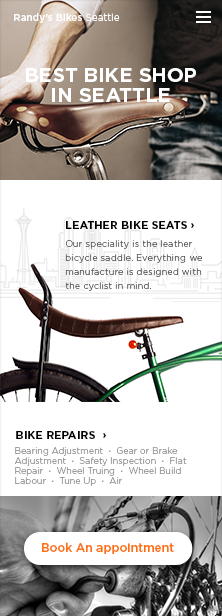Page Meta Tags
Your page's meta tags are the text that you'll see when your page comes up in a Google search. This is most likely the first bit of information
people will read about you so you want these meta tags to be as accurate, descriptive and helpful as possible.
Our site builder lets you add unique meta tags for each page so people who are searching for your content can see a much more accurate description through Google's search results.
This way, you can target different audiences with each of your pages easily and efficiently.
Learn how to add meta tags
Content
Content is probably the most important factor that Google uses to categorize websites. After all, your content is what Google will look at to
determine if your web page will be helpful to its users. So, having good and relevant content will play a huge role in determining how Google
will rank your website.
Website.com makes it easy for you to add, edit and customize your web content with a drag-and-drop site builder so you
can change anything you want at any time.
Learn how to add text
Alt Text
In addition to processing the text content on your web pages, Google will also try to figure out what your images are about as well. Alt Text is a
short description that you can customize for each image to let Google know what the image is about. Setting short, descriptive Alt Texts through
our site builder will help Google better associate your web pages with the search terms you're trying to target.
Learn how to add alt text
